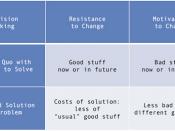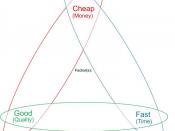One of the key roles of being a manager or potential manager is solving problems and making decisions. Do you do it alone? Do you involve others? Do you let others make the decisions? "Decision making is the study of identifying and choosing alternatives based on the values and preferences of the decision maker. Making a decision implies that there are alternative choices to be considered, and in such a case we want not only to identify as many of these alternatives as possible but to choose the one that best fits with our goals, objectives, desires, values, and so on." (Harris, 1998).
There are many different methods and techniques that are used by managers to help them make decisions. One of the most common methods is the Pros and Cons analysis. A Pros and cons analysis is a qualitative comparison method in which good things (pros) and bad things (cons) are identified about each alternative.
Lists of the pros and cons are compared one to another for each alternative. The alternative with the strongest pros and weakest cons is preferred. It requires no mathematical skill and is easy to implement. (Baker, 2002).
A closely related method to the pros and cons analysis is the PMI method. PMI stands for "Plus/Minus/Interesting" and is a variation of the pros and cons technique adding a third possibility called "interesting." It is a valuable development (by Edward de Bono) of the pros and cons technique that has been used for centuries. PMI is a basic decision making tool that can be used when facing a difficult decision. It is used by simply drawing up a table with three separate sections titled "Plus", "Minus", and "Interesting." In the column underneath the "Plus" heading, the decision maker should write down all the positive points...


